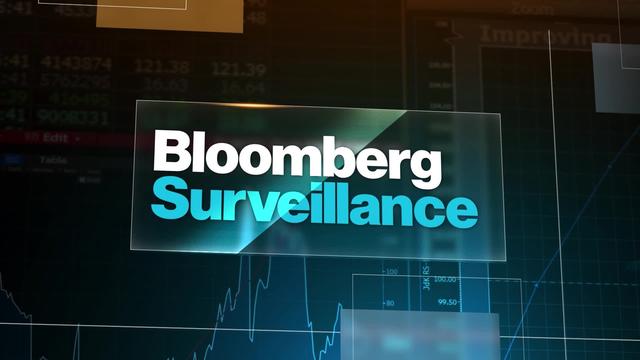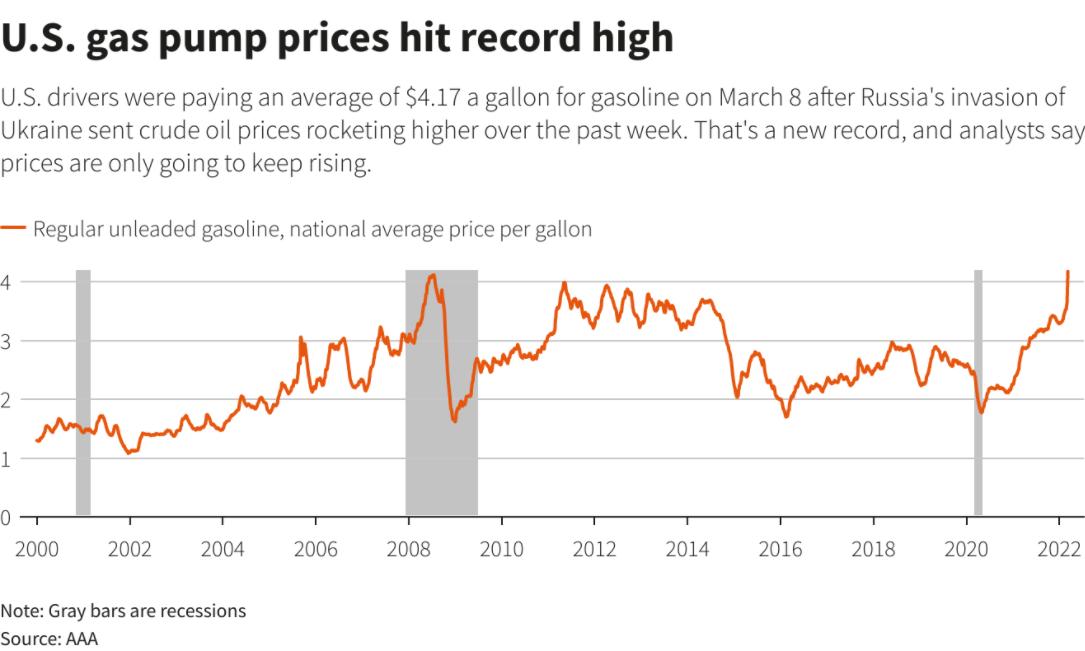
It’s not your imagination: The huge spike in gas prices over the last few weeks has been historic.
The average price of regular gas around the country climbed from $3.53 per gallon on February 21 to $4.32 on March 14. That’s a 22% jump, according to data released by the U.S. Energy Information Administration (EIA), representing the fastest rate for rising gas prices over a three-week span since the agency began tracking this data in 1990.
The EIA attributed most of the sudden growth in retail gas prices to rising crude oil prices in the aftermath of Russia’s invasion of Ukraine at the end of February.
Prices have since fallen slightly and were averaging $4.24 per gallon on March 21, according to the EIA.
In a blog post on Monday, GasBuddy head of petroleum analysis Patrick De Haan noted that the modest decline “is still subject to changes in global supply and demand, Covid and Russia’s war on Ukraine,” adding that “for now, gasoline demand has shown absolutely no signs of buckling under the pressure of higher prices.”
That’s especially true on the West Coast, where prices have continued to rise. On Tuesday, the price of a gallon of gas averaged more than $6 in Los Angeles — a first for any major U.S. city. That’s not to mention the fact that prices tend to rise in the summer anyway, thanks to peak vacation season and the annual switch to a blend of gasoline that is better suited to warmer weather but more expensive to produce.
De Haan added that if the crisis in Ukraine continues to deteriorate, “it’s not impossible that gas prices would still have to climb a considerable amount for Americans to start curbing their insatiable demand for gasoline.”

While the speed at which gas prices rose recently has not been seen in years, today’s prices at the pump at not at record highs in terms of their true cost.
A recent analysis by the Wall Street Journal found that when adjusted for inflation, gas prices were actually more expensive as recently as 2014. In terms of real price levels, today’s fuel costs are actually similar to what drivers paid in the early 1980s. The Journal noted that those prices were even more painful to the typical household budget in the ’80s because cars were so much less fuel-efficient and required significantly more gas per mile than they do today.
Inflation-adjusted gas prices peaked in the summer of 2008 during the financial crisis, when the price of one gallon of gas reached $4.11, according to the EIA. That’s the equivalent of $5.27 in 2022 dollars.
Still learning the basics of personal finance? Let us teach you the major money lessons you NEED to know. Get useful tips, expert advice and cute animals in your inbox every week.
Sign Up
Gas Prices Just Passed $6 in a Major U.S. City for the First Time Ever
Inflation Watch: Prices Are Spiking Everywhere, but Here’s Where Cost Increases Are the Worst
What Soaring Gas and Oil Prices Mean for Your Investments
© Copyright 2021 Ad Practitioners, LLC. All Rights Reserved.This article originally appeared on Money.com and may contain affiliate links for which Money receives compensation. Opinions expressed in this article are the author's alone, not those of a third-party entity, and have not been reviewed, approved, or otherwise endorsed. Offers may be subject to change without notice. For more information, read Money’s full disclaimer.
The views and opinions expressed herein are the views and opinions of the author and do not necessarily reflect those of Nasdaq, Inc.